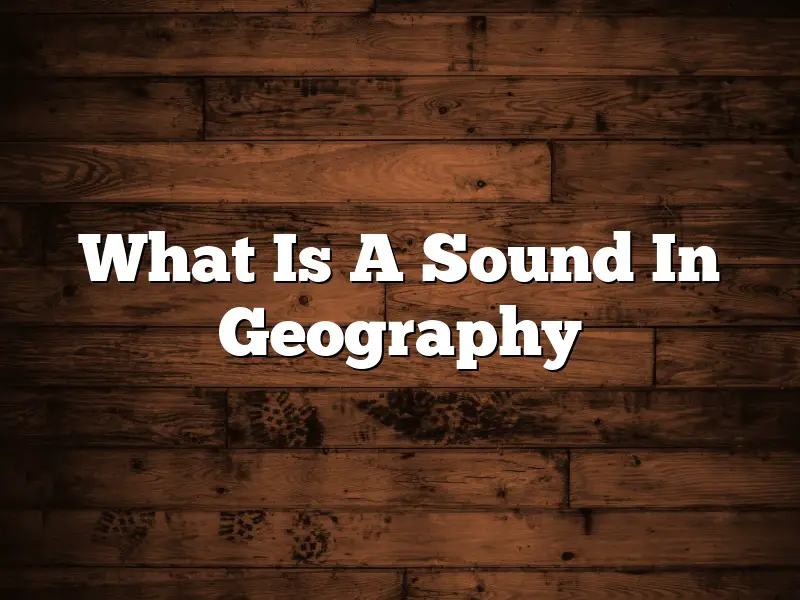Sound is an important part of our lives, and it’s important for kids to understand what sound is and how it works. Here’s a basic definition of sound: Sound is a type of energy that travels through the air, or any other medium, as a vibration of pressure waves.
The vibrations create tiny fluctuations in the air pressure, and our ears are able to pick up these fluctuations and convert them into electrical signals that our brains understand. This is why we’re able to hear sound when it’s transmitted through the air, or through other media like water or metal.
Sound is created by things that make noise, like musical instruments, people talking, or machines running. When something makes a noise, it vibrates and creates sound waves. You can see sound waves if you create a ripple on a still pond; the ripples are the sound waves.
Sound can be measured in terms of frequency, amplitude, and wavelength. Frequency is how often the waves vibrate, amplitude is the height of the waves, and wavelength is the distance between two wave peaks.
There are three basic types of sounds: consonant sounds, vowel sounds, and noise. Consonant sounds are created when two or more sounds waves collide. Vowel sounds are made when the air pressure in the mouth is modified to produce certain sounds. Noise is any sound that doesn’t fit into one of the other categories.
Sound is important for kids because it helps them learn and communicate. It’s also important for safety, because kids can hear things like cars coming and people calling for help. Teaching kids about sound is a great way to help them understand their environment and the world around them.
Contents
What is sound explain for kids?
Sound is a type of energy that travels through the air, or any other medium, as a vibration of pressure waves. You can hear sound when these waves cause your eardrum to vibrate.
The pitch of a sound is determined by the frequency of the waves. Higher frequencies create higher pitches, while lower frequencies create lower pitches.
The loudness of a sound is determined by the amplitude of the waves. Greater amplitudes create louder sounds.
Sound can be used to communicate information, such as in speech and music. It can also be used to warn or scare people, or to attract attention.
What is sound in simple words?
Sound is a type of energy that travels through the air, or any other medium, as a vibration of pressure waves. These pressure waves can be heard when they hit the ear drum, and the sound that we hear is a result of the waves vibrating our eardrums.
What is sound sound?
Sound is created by vibrations that travel through the air, or any other medium, such as water or glass. These vibrations cause the air pressure to fluctuate, which our ears detect as sound.
The pitch of a sound is determined by how quickly the vibrations occur. The higher the frequency of the vibrations, the higher the pitch of the sound. The amplitude of a sound is determined by how large the vibrations are. The louder the sound, the greater the amplitude.
Sound can be described by its timbre, which is the combination of all the frequencies that are present in a sound. For example, the sound of a guitar string is different from the sound of a piano string, even if they both have the same pitch. This is because the guitar string has a higher frequency than the piano string.
Sound can also be muffled or dampened by objects in its path. For example, if you put your hand over your mouth, you will muffle the sound of your voice. This is because your hand is blocking the sound waves from entering your ear.
What is sound called?
Sound is the result of pressure waves that propagate through the air, or any other medium. These waves cause the air molecules to vibrate and these vibrations are what we hear as sound.
Sound is typically described by its pitch, volume, and timbre. Pitch is how high or low a sound is, and is measured in Hertz (Hz). Volume is the strength of a sound, and is measured in decibels (dB). Timbre is the quality of a sound, and is determined by the type of waveform it produces.
There are three types of sound waves: transverse, longitudinal, and shear. Transverse waves are the type of wave that you typically see on a ripple tank. They move perpendicular to the direction of propagation. Longitudinal waves are the type of wave that you see in a Slinky or on a stringed instrument. They move in the same direction as the direction of propagation. Shear waves are a type of longitudinal wave that move at an angle to the direction of propagation.
Sound can be affected by the environment in which it is produced. For example, sound travelling through air is affected by temperature, humidity, and pressure. These factors can all affect the pitch, volume, and timbre of a sound.
How do you introduce sound to a child?
When introducing sound to a child, it’s important to use a tone of voice that is informative and engaging. You can start by talking about the different sounds that you hear around you. You can also make noises and have your child imitate them. It’s also important to provide plenty of opportunities for your child to listen to different types of sound. This can be done by playing music, going on walks, or visiting a park.
What is sound definition and example?
Sound is a type of energy that travels through the air, or any other medium, as a vibration of pressure waves. The human ear is able to detect these waves and convert them into nerve impulses that the brain interprets as sound.
Sound can be described as a type of energy that travels through the air, or any other medium, as a vibration of pressure waves. The human ear is able to detect these waves and convert them into nerve impulses that the brain interprets as sound.
Sound can be produced in a variety of ways, including by musical instruments, the human voice, or by machines. Some sounds are pleasant to the ear, while others are not. The sound of a thunderstorm, for example, is not usually considered to be pleasant, while the sound of a violin can be.
Sound is also used in a variety of ways, including for communication, for entertainment, and for safety purposes.Police officers, for example, use sound to communicate with one another, and to warn people of danger. Ambulances use sirens to warn drivers to get out of the way.
There are a number of factors that affect the sound that is produced. The pitch of a sound, for example, is determined by the frequency of the waves that are created. The timbre of a sound is determined by the harmonic content of the waves. The loudness of a sound is determined by the amplitude of the waves.
The following is an example of a sound:
The sound of a person talking.
Where is a sound?
Where is a sound? This is a question that has puzzled philosophers and scientists for centuries. A sound can be described as a pressure wave that travels through the air, or any other medium, as a vibration of the particles that make up the medium. Sounds are created by things such as musical instruments, the human voice, or thunder.
The human ear is able to hear sounds that range in frequency from 20 to 20,000 Hz. Sounds that are lower in frequency are called bass sounds, while sounds that are higher in frequency are called treble sounds. The human ear is also able to distinguish between sounds that are loud and soft, and between sounds that are high and low in pitch.
The tone of a sound can be affected by the environment in which it is produced. For example, the sound of a voice will sound different when it is being produced in a large hall, compared to when it is being produced in a small room. The tone of a sound can also be affected by the type of material that the sound is travelling through. For example, the sound of a voice will sound different when it is being produced in air, compared to when it is being produced in water.
The loudness of a sound can be affected by the amount of energy that is being used to produce the sound. For example, the sound of a voice will be louder when the person is shouting, compared to when they are speaking softly. The loudness of a sound can also be affected by the distance between the sound source and the listener. For example, the sound of a thunderstorm will be louder when it is heard from a distance, compared to when it is heard close up.
The pitch of a sound can be affected by the frequency of the sound wave. For example, the sound of a voice will be higher in pitch when the person is singing, compared to when they are speaking. The pitch of a sound can also be affected by the size of the sound wave. For example, the sound of a thunderstorm will be lower in pitch when it is heard from a distance, compared to when it is heard close up.



